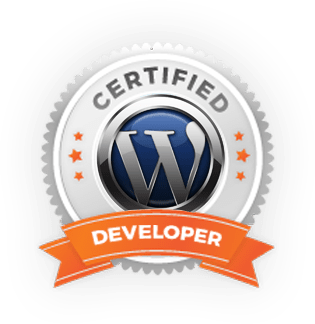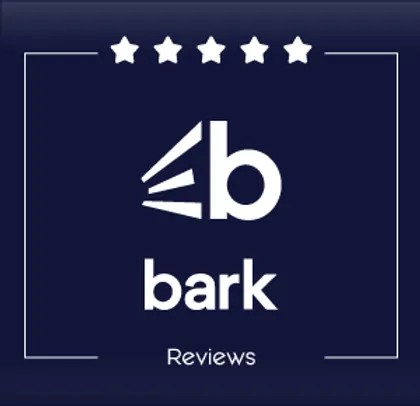In today’s digital age, having a website is crucial for any business, and WordPress stands out as one of the most popular platforms for creating stunning and functional websites. With its user-friendly interface and extensive customization options, WordPress allows both beginners and experts to design websites that meet their unique needs and preferences.
WordPress offers a plethora of themes and plugins that enable you to create a site that not only looks great but also performs exceptionally well. Whether you are aiming for a simple blog or a complex e-commerce site, WordPress provides the tools you need to bring your vision to life.
The key to a successful WordPress website design lies in understanding the platform’s capabilities and learning how to leverage its features effectively. From choosing the right theme to optimizing your site’s performance, mastering WordPress can significantly enhance your online presence and boost your business growth.
If you are looking to take your website design skills to the next level, our team at SEON Experts is here to help. Call us today at (817) 213-6090 to discuss how we can assist you in creating a powerful and engaging website that stands out from the competition.
Choosing the Right WordPress Theme

One of the first steps in creating a successful WordPress website is selecting the right theme. The theme you choose will determine the overall look and feel of your site, so it’s essential to pick one that aligns with your brand’s identity and goals. With thousands of free and premium themes available, making a choice can seem overwhelming, but by following a few key guidelines, you can find the perfect fit for your website.
Firstly, consider the purpose of your website. If you’re running a blog, a theme that emphasizes readability and content presentation is ideal. For an e-commerce site, look for themes that offer built-in support for popular plugins like WooCommerce. It’s also crucial to choose a theme that is responsive, ensuring your site looks great on all devices, from desktops to smartphones.
Next, evaluate the customization options available. A good theme should allow you to tweak colors, fonts, layouts, and other design elements without needing extensive coding knowledge. This flexibility ensures your site remains unique and aligned with your brand’s aesthetics. Additionally, check for SEO-friendly features, as a well-optimized theme can significantly improve your site’s visibility on search engines.
Another important factor is support and updates. Choose a theme from a reputable developer who offers regular updates and customer support. This ensures your website remains secure and compatible with the latest WordPress versions and plugins.
By carefully selecting a theme that suits your specific needs and offers robust features, you set a solid foundation for your WordPress website design journey. Remember, the right theme can enhance user experience, improve site functionality, and ultimately contribute to your site’s success.
Essential Plugins for WordPress Design

Once you have chosen the perfect theme for your WordPress website, the next step is to enhance its functionality with the right plugins. WordPress plugins can add a variety of features to your site, ranging from improved security to advanced design capabilities. Here are some essential plugins that can significantly elevate your WordPress website design:
- Elementor: This is a powerful drag-and-drop page builder that allows you to create custom layouts and designs without any coding knowledge. With a wide array of widgets and templates, Elementor makes designing your site an intuitive and creative process.
- Yoast SEO: An essential plugin for optimizing your site’s content for search engines. Yoast SEO helps you manage meta tags, generate sitemaps, and analyze your content for readability and keyword usage, ensuring your site ranks well on search engines.
- WPForms: Easy-to-use form builder that lets you create contact forms, survey forms, and other types of forms with a simple drag-and-drop interface. It’s an excellent tool for engaging with your audience and gathering valuable feedback.
- Smush: This plugin optimizes images for faster loading times without compromising quality. Faster load times improve user experience and can positively impact your site’s SEO.
- W3 Total Cache: A caching plugin that enhances your website’s performance by reducing the load time. It ensures your visitors have a smooth and fast browsing experience, which can lead to higher engagement and conversions.
- Wordfence Security: Essential for protecting your site from potential threats and attacks. Wordfence offers real-time monitoring, firewall protection, and malware scanning to keep your website safe and secure.
By incorporating these essential plugins into your WordPress website, you can significantly enhance its design, functionality, and security. These tools not only make the design process easier but also ensure your site remains competitive and user-friendly.
Customizing Your WordPress Site

Customization is at the heart of creating a unique and engaging WordPress website design. With countless options available, you can tailor your site to reflect your brand identity and meet your specific needs. Here’s how you can effectively customize your WordPress site:
- Theme Customizer: The WordPress Theme Customizer is a powerful tool that allows you to tweak your site’s appearance in real-time. You can modify colors, fonts, header images, and more to ensure your site aligns with your brand’s aesthetics.
- Custom CSS: For more advanced customization, adding custom CSS can provide greater control over your site’s design. Whether you want to tweak existing styles or create new ones, custom CSS allows for precise adjustments.
- Widgets and Sidebars: Widgets enhance your site’s functionality by allowing you to add content and features to your sidebars, footers, and other widget-ready areas. From social media feeds to custom menus, widgets can make your site more interactive and user-friendly.
- Menus and Navigation: A well-structured navigation menu is crucial for user experience. Customize your menus to ensure visitors can easily find the information they need. WordPress allows you to create multi-level menus, add custom links, and organize your pages effectively.
- Plugins for Customization: Plugins like Elementor and Beaver Builder offer extensive customization options. These page builders provide an intuitive interface for designing custom layouts, adding widgets, and tweaking elements without needing to code.
- Custom Post Types: If your site requires specialized content types, you can create custom post types. This feature is particularly useful for portfolios, testimonials, and other unique content structures. Tools like Custom Post Type UI simplify this process.
- Child Themes: When making extensive customizations, using a child theme is recommended. A child theme allows you to modify your site’s design and functionality without altering the original theme files, ensuring that updates to the parent theme do not overwrite your changes.
By leveraging these customization options, you can create a WordPress site that not only stands out visually but also provides a seamless and engaging user experience. Remember, the key to successful customization is to maintain a balance between aesthetics and functionality.
SEO Best Practices for WordPress
Optimizing your WordPress website design for search engines is crucial for attracting organic traffic and improving your online visibility. Implementing SEO best practices ensures that your site ranks higher in search engine results pages (SERPs). Here are some essential SEO strategies for your WordPress site:
- Choose an SEO-Friendly Theme: Selecting a theme that is optimized for speed and performance is the first step. An SEO-friendly theme ensures that your site loads quickly and is mobile-responsive, both of which are important ranking factors.
- Install an SEO Plugin: Plugins like Yoast SEO and All in One SEO Pack provide comprehensive tools for optimizing your site. These plugins help you manage meta tags, generate XML sitemaps, and analyze your content for SEO improvements.
- Optimize Your Content: Use relevant keywords naturally within your content. Focus on creating high-quality, informative, and engaging posts that provide value to your audience. Ensure that your content is well-structured with proper headings (H1, H2, H3), bullet points, and short paragraphs.
- Use Clean and Descriptive URLs: Ensure that your URLs are clean, short, and descriptive. Avoid using generic or auto-generated URLs. Instead, use keywords that accurately describe the content of the page.
- Optimize Images: Large images can slow down your site, affecting your SEO. Compress images before uploading them and use descriptive alt text to help search engines understand what the images depict.
- Internal Linking: Create a strong internal linking structure to help search engines crawl your site more effectively. Internal links also help users navigate your site and discover related content, improving their overall experience.
- Speed Optimization: A fast-loading site is crucial for both user experience and SEO. Use caching plugins like W3 Total Cache or WP Super Cache, and consider using a Content Delivery Network (CDN) to serve your content faster.
- Mobile Optimization: With a significant portion of web traffic coming from mobile devices, ensuring your site is mobile-friendly is essential. Use responsive design techniques and test your site on various devices to ensure it provides a good user experience on all screen sizes.
- Secure Your Website: Security is a ranking factor for search engines. Use HTTPS to encrypt data between your site and its visitors. Many hosting providers offer free SSL certificates, or you can use services like Let’s Encrypt.
- Monitor and Analyze: Regularly monitor your site’s performance using tools like Google Analytics and Google Search Console. Analyze the data to identify areas for improvement and keep track of your progress over time.
By implementing these SEO best practices, you can significantly enhance your WordPress site’s visibility and attract more organic traffic. Consistent optimization and regular monitoring are key to maintaining and improving your search engine rankings.
Advanced WordPress Optimization Techniques

To take your WordPress website design to the next level, advanced optimization techniques are essential. These strategies go beyond basic SEO and performance tweaks, providing you with a competitive edge in the crowded online space.
- Database Optimization: Over time, your WordPress database can become cluttered with unnecessary data. Use plugins like WP-Optimize to clean up and optimize your database, removing revisions, spam comments, and transient options that can slow down your site.
- Lazy Loading: Implement lazy loading for images and videos to improve page load times. This technique delays the loading of non-critical resources until they are needed, enhancing the user experience. Plugins like WP Rocket or Smush can easily enable lazy loading on your site.
- Minification of CSS and JavaScript: Minifying your CSS and JavaScript files reduces their size and improves load times. Tools like Autoptimize or Fast Velocity Minify can help you combine and minify these files, ensuring your site runs faster.
- Utilize Content Delivery Networks (CDNs): CDNs distribute your site’s static files across a network of servers worldwide, reducing the load on your main server and speeding up content delivery to users, regardless of their location. Services like Cloudflare or StackPath are popular choices.
- Advanced Caching Techniques: Beyond basic page caching, consider using object caching and database caching. Plugins like W3 Total Cache offer advanced caching options that can significantly improve site performance by reducing the need to query the database for every page load.
- Server-Side Performance Optimization: Ensure your hosting environment is optimized for WordPress. This includes using the latest PHP version, enabling GZIP compression, and configuring server caching. Managed WordPress hosting providers often take care of these optimizations for you.
- Code Quality and Customization: Regularly review and optimize your site’s code. Remove unused plugins and themes, and avoid excessive use of third-party scripts. Customizing your theme and plugins to remove unnecessary bloat can also improve site performance.
- Content Delivery Strategy: Optimize your content delivery by using techniques such as preloading, prefetching, and prerendering. These methods help browsers load resources more efficiently, reducing perceived load times for users.
- Leverage Browser Caching: Configure your site to leverage browser caching, which stores static files in a user’s browser. This reduces the need to re-download these files on subsequent visits, speeding up load times.
- Advanced Security Measures: Enhance your site’s security with advanced measures like two-factor authentication, malware scanning, and regular backups. A secure site not only protects your data but also maintains user trust and search engine rankings.
Implementing these advanced optimization techniques will ensure your WordPress site is not only fast and efficient but also resilient and secure. If you’re looking to maximize your website’s potential, call us today at (817) 213-6090 for expert assistance.






